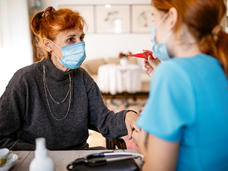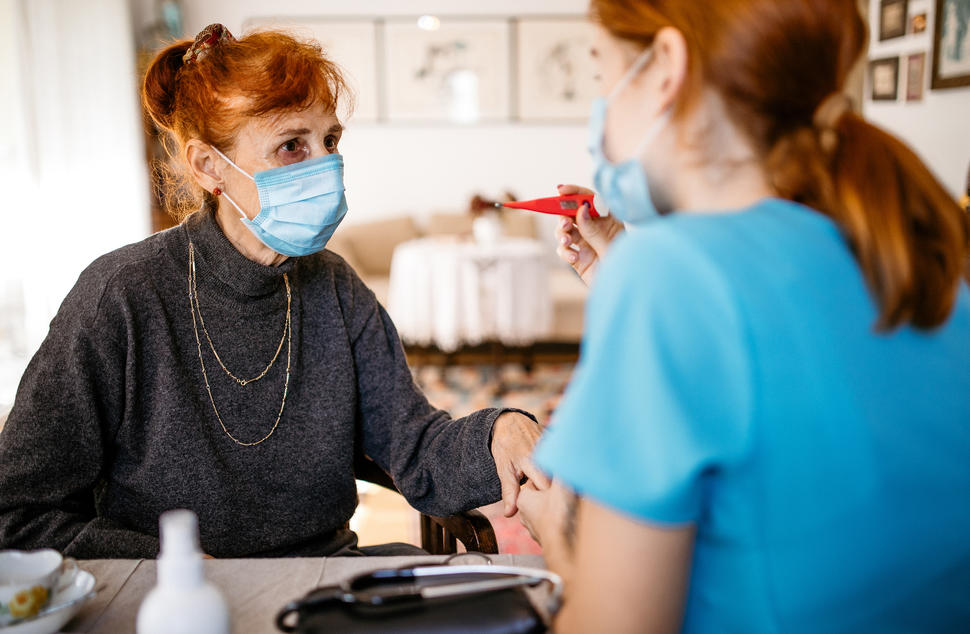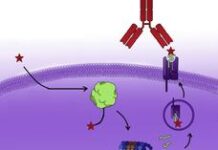, by NCI Staff
For people with advanced cancer, severe side effects from treatment often force them to the hospital or the emergency room. Although these time-consuming and, quite often, expensive hospital trips potentially could be prevented by better communication about symptoms between patients and their doctors, the reality is that such discussions don’t typically happen as frequently as they should.
Now, a new study shows that community health workers (CHWs) may help bridge this communication gap in cancer care. In the study, having a CHW directly consult with people newly diagnosed with advanced cancer or cancer recurrence, including assessing their symptoms and helping them with advance care planning, substantially decreased hospitalizations and emergency room visits. Advance care planning is a formal decision-making process to guide a person’s future medical care, often in the event that the person is not capable of making those decisions themselves.
“The community health care worker is almost like your extra pair of eyes and ears,” said David J. Park, M.D., of the Virginia K. Crosson Cancer Institute at Providence St. Jude Medical Center, who co-led the study. “Having that extra person to pick up on symptoms helped us” treat patients before their symptoms forced them to go to the hospital.
In the study, people with advanced cancer—including those near the end of their life—who had routine visits from a CHW in addition to usual care over a 6-month period were much less likely to be hospitalized during that period than patients who received usual care alone.
And the benefits of bringing CHWs into the care process didn’t end there. Patients who worked with a CHW also made greater use of advance care planning, palliative and hospice care, and had improved mental and emotional health compared with those who received usual care. The interactions provided by the CHWs consisted of regular telephone calls and in-person visits.
The findings were published June 30 in JAMA Oncology.
“This is important work,” said Diane St. Germain, R.N., M.S., of the Community Oncology and Prevention Trials Research Group in NCI’s Division of Cancer Prevention. “What I think this boils down to is that patients have access to someone providing a high degree of personal attention to address their care needs.”
“No one wants to be in the emergency department or the hospital, especially people who have limited time to live,” said Manali I. Patel, M.D., M.P.H., of the Stanford University School of Medicine, who co-led the study. “This study provides more evidence that health care clinics and systems can integrate CHWs to improve the way that they deliver health care for people with cancer. This helps patients spend less time in the emergency department or hospital and have better experiences.”
Building on earlier studies of CHWs and people with cancer
Anyone can be a CHW once they are trained to serve as a public health worker. They take on many roles, including providing educational resources to patients, offering emotional support, and helping screen patients for symptoms. But, although CHWs are frequently used in the health care system, it’s been hard to quantify their impact on the patient experience.
A previous study of Medicare enrollees led by Dr. Patel showed that having CHWs provide symptom screening resulted in fewer hospitalizations. In another study she led, when CHWs provided information and guidance about advance care planning to military veterans with advanced cancer, those patients also had fewer hospitalizations.
In this new study, Drs. Park and Patel wanted to test the effect of combining both symptom screening and advance care planning on hospitalizations in a CHW-led intervention.
An enduring effect
Their study included 128 adults who were newly diagnosed with advanced cancer or recurrent solid and blood cancers and being treated at the St. Jude Crosson Cancer Institute, a community cancer clinic in Fullerton, California. Participants were randomly assigned to receive either usual care provided by their clinical team or usual care plus a 6-month consultation program led by a CHW.
The CHWs conducted weekly symptom screening via phone and in-person visits, as well as discussions about advance care planning.
Within 6 months of enrolling in the study, only 12 patients (19%) in the CHW group went to the hospital, including visits to the emergency room, compared with 26 patients (41%) in the usual care group. After 1 year of follow-up, patients in the CHW group still were nearly 20% less likely to visit the hospital or emergency room than people in the usual care group.
Dr. Park explained that after working with a CHW, patients may become more proactive about alerting their doctor to their symptoms.
“There’s a little bit of teaching that happens during these meetings with the health care worker where the patient is used to reporting things. And they may start having these conversations with their physician,” he said.
What’s more, patients in the intervention group were 8 times more likely to use advance care planning, 4 times more likely to use palliative care, and nearly two times more likely to use hospice care compared with patients in the usual care group. They also reported better mental and emotional health than patients in the usual care group.
There was no difference in the number of deaths between the two groups during the study period. However, none of the patients who interacted with a CHW were hospitalized in the month before their death, compared with 6 patients in the usual care group.
Marilyn Dewland, a retired nurse who served as one of the CHWs in this study, said that one of the most powerful effects of her role was just being present and listening to the patient.
“A significant part of it was nonverbal,” Ms. Dewland said. “You’re developing a trust relationship so that the patient is willing to share and be forthright. Sometimes just keeping their emotional state stable can help, because when people get frightened and worried, they run to the ER.”
Questions remain
In an accompanying editorial in JAMA Oncology, Ana I. Tergas, M.D., M.P.H., of City of Hope Comprehensive Cancer Center, said that although the study results are promising, it remains to be seen whether the findings are generalizable beyond the Crosson Cancer Institute.
Ms. St. Germain agreed. “How does this intervention play out in different settings, including rural as well as urban? How does this play out in more diverse patient populations?” she said.
There’s also potential variability in the frequency of the interactions. “Some people may need only a monthly check-in with a CHW, some people may need one every 3 weeks. It’s not one-size-fits-all,” Dr. Park said.
Dr. Patel noted that a follow-up study is now underway to look at the impact of a CHW-led intervention at multiple community cancer clinics, which might answer some of these questions.
Ms. St. Germain pointed out that it will be important for CHWs to undergo rigorous training and have access to the clinical team when issues do come up.
Dr. Tergas said it will also be important to compare the cost of the intervention with potential savings from hospitalizations and emergency room visits that were avoided.
Technologies like smartphone apps and other remote monitoring devices are also being studied as ways to improve symptom monitoring and control. But factors like cost and ease of use may limit their use, Dr. Park said. However, “it’s not either/or,” he said. There’s a role for both technologies and CHWs in delivering cancer care.
“The inclusion of technology may in fact improve intervention effectiveness,” Dr. Tergas said in her editorial.
Regardless of the approach, it’s clear that incorporating more of a human touch into the cancer care process can make a difference for people with advanced cancer, Dr. Park said. “That’s the one thing that is easy to take for granted or forget about, because it’s hard to quantify.”








